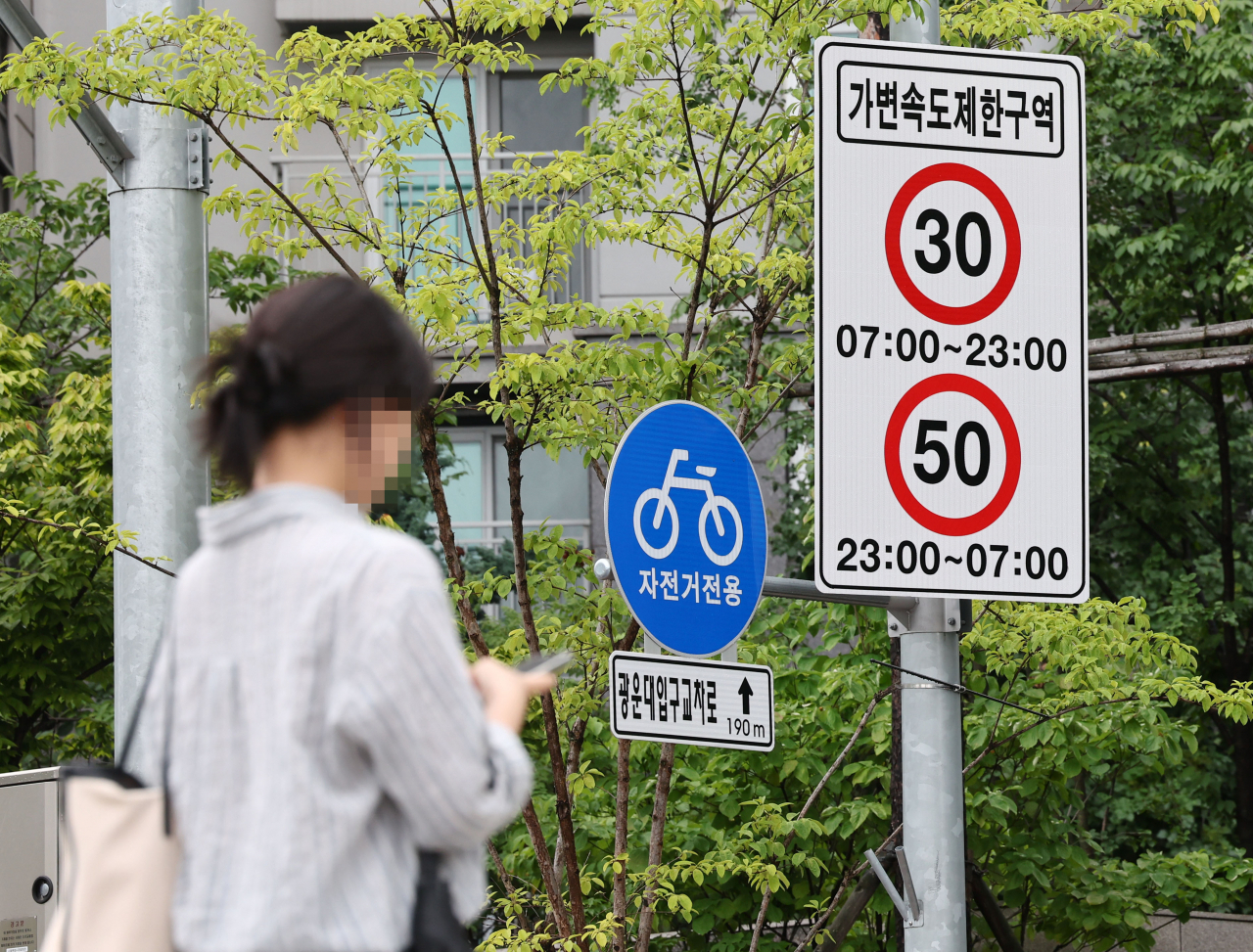 |
Speed limit sign in a school zone in Seoul (Yonhap) |
Nighttime and early morning speed limits in "school zones" – child protection zones on roadways adjacent to schools – will be raised to 50 kilometers per hour from the current 30 kph starting from Sept. 1, the National Police Agency of South Korea announced on Tuesday.
Effective from 9 p.m. to 7 a.m., the new speed limit aims to accommodate traffic during times when fewer students are present on the streets. The decision follows last year's pilot testing in specific areas and a comprehensive review by experts, according to the police.
While individual school zones will tailor their operating hours based on specific traffic conditions, the 30 kph limit will remain in effect during peak student commuting times in the morning and afternoon.
According to South Korea's Road Traffic Act, school zones encompass areas within a 300-meter radius from the primary entrances of kindergartens and elementary schools. In these zones, the speed of motor vehicles should not exceed 30 kph. Since 2010, traffic violations in school zones are hit with harsher punishments, with drivers facing fines and penalty points twice as high as those in other areas.
Debate around such strict regulations most notably came to national attention in September 2019, following a tragic car accident that claimed the life of a 9-year-old boy named Kim Min-sik. A subsequent amendment in December 2020, named "Min-sik's law" after the young victim, stipulates that a driver responsible for a child's death in school zones can face between three years to a lifetime in prison. If a child is injured due to reckless driving, the driver may be penalized with a fine of up to 30 million won ($24,000) or a prison sentence of up to 15 years.
The amendment immediately sparked contention, with critics labeling the penalties as disproportionately severe. Many drivers began equipping their vehicles with surround-view cameras, renewing their navigation apps to avoid school zones and increasing their insurance coverage. Some have argued that the real issue lies not in speed per se, but in frequent obstructions on the streets -- especially illegally parked cars -- that impede vision. The sense of frustration and resentment has been further fueled recently by viral videos on social media showing schoolchildren playing pranks on drivers by lying down on the streets within these zones.
Incidentally, the driver involved in Kim Min-sik's accident was driving under the designated speed limit, clocking in at 23.6 kph.
The decision to lift the nighttime speed limit may help address some of these grievances, police officials said. "We have been hearing consistent calls from the public for more adaptable speed regulations. Our objective is to strike a balance between streamlining traffic rules and ensuring the safety of our children. As such, we will continue our focus on clamping down on drunk and reckless driving," a National Police Agency official said.







![[Today’s K-pop] Blackpink’s Jennie, Lisa invited to Coachella as solo acts](http://res.heraldm.com/phpwas/restmb_idxmake.php?idx=644&simg=/content/image/2024/11/21/20241121050099_0.jpg)